Final Fantasy XIII-2 Review
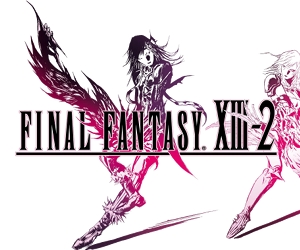 Game: Final Fantasy XIII-2
Game: Final Fantasy XIII-2
Developer: Square Enix
Publisher: Square Enix
Available On: Xbox 360 and PlayStation 3 (Reviewed on PlayStation 3)
As a direct sequel to one of the most divisive games of recent years, Final Fantasy XIII-2 raised eyebrows when it was announced. Those eyebrows were further elevated when its content was revealed: Final Fantasy XIII’s controversial battle system would remain, while its central party of six would be replaced by a duo comprised of a former NPC and a new character. And although Square Enix paid heed to criticisms of Final Fantasy XIII’s linearity by promising a more open world, they also made the decision to punctuate its sequel’s boss battles with that much-derided feature of action games: the Quick-Time Event.
Lurking behind these conflicting messages like an effeminate hero behind his spiky fringe is the troubling spectre of the last “sequel” in the series, 2003’s Final Fantasy X-2, which stripped its heroine, Yuna, of her noble summoning career, her dignity and most of her clothes. Despite solid gameplay, that game’s dramatic shift in tone from its sombre predecessor was too much for many fans to stomach, and it’s unlikely to be remembered as one of the series’ great triumphs.
With a flawed predecessor, an awkward status as sequel and the unmitigated disaster that was Final Fantasy XIV hanging grimly over its cutely-accessorised head, Final Fantasy XIII-2 would seem to have the odds stacked against it. Yet this awkward heritage makes it worthy of thorough scrutiny, if only to see whether it’s possible for the series to claw its way out of the chasm of mediocrity that’s threatened to engulf it ever since it ventured onto the seventh-generation consoles.
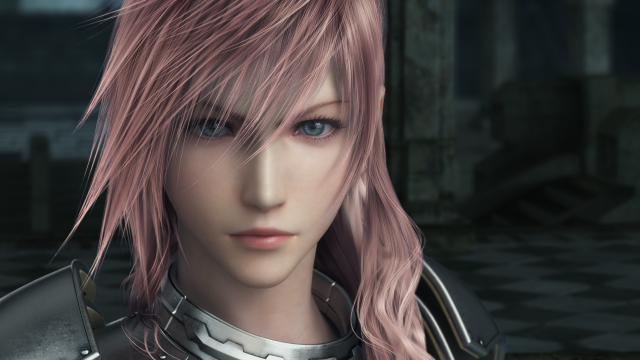
STORY: In the first of many practical design decisions, Final Fantasy XIII-2 comes equipped with a “Beginner’s Primer” (accessed via the main menu), which helpfully recounts the events of Final Fantasy XIII. Though this is worth familiarising yourself with if you want to get the most out of the game, the story’s trump card – and the reason many will feel it warrants a sequel – is the concept of the twin worlds of Cocoon and Pulse.
Cocoon, an inverted planet (hush, physicists) was once the undisputed apex of human civilization, suspended far above the vast savage wasteland of Pulse, below. At the end of Final Fantasy XIII, Cocoon threatened to crash into Pulse, but both were saved when Pulse-born Fang and Vanille transformed into a giant pillar of crystal anchoring Cocoon in place. In the intervening years, Cocoon’s citizens have begun colonising Pulse, and the once-threatening expanse has become home to many fledgling civilisations.
The result of this, and the tensions between those who stayed on Cocoon and those who decamped to Pulse, are perhaps the most interesting features of the game. The Final Fantasy series has always excelled at balancing large-scale political concerns with poignant, personal struggles, and Final Fantasy XIII-2 is no different. A story that begins with a young girl setting out to find her long-lost sister soon becomes a sweeping epic about how civilizations rise and fall, shaped for better or worse by science and education. It manages this by having its heroes, and thus the player, leap back and forth across time and space, glimpsing desolate futures and alternative histories as they attempt to solve the paradoxes that keep heroine Serah and her goddess-like sister Lightning (Final Fantasy XIII’s protagonist) apart.
Indeed, time is Final Fantasy XIII-2’s currency, and its shifting story juggles chronologies with aplomb as Serah and Noel Kriess, a baby-faced hunter from a dystopian future, use gates to traverse timelines on their journey to Valhalla, where Lightning awaits, engaged in an epic struggle with floppy-haired antagonist Caius. Locations visited previously change depending on the year (and, we are told, Serah and Noel’s actions), but they nevertheless feel a little disconnected from each other. Since they’re all accessed via the Historia Crux, a central hub which functions in a similar way to the level selectors of early ’90s Nintendo platformers, there’s little sense of true progression through the world, more a slightly disorientating feeling of hopping between random areas. Although the game is carefully plotted, which is impressive considering its open-ended narrative, it can feel more like a collection of levels than a cohesive universe.
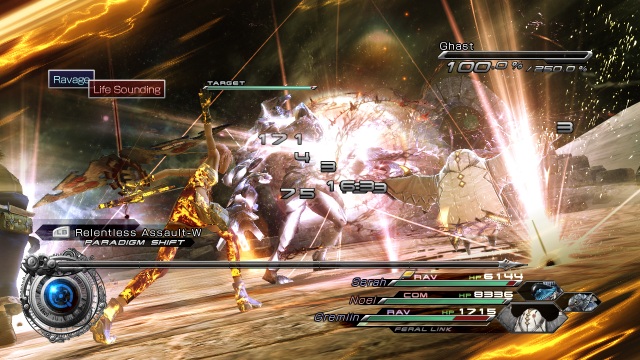
It’s not a fair comparison given the sheer scale of Final Fantasy XIII-2, but one is reminded of Konami’s Shadow of Memories (2001), in which a single town is explored in various timelines, each action in the past subtly (or dramatically) changing the town in the present. While we’re told that each location in Final Fantasy XIII-2 is as it is because of an action Serah and Noel performed in a different timeline, since every scenario is entered and explored independently of the others, it never really feels as though you have genuine agency.
Thankfully, Serah, Noel and Mog the Moogle are fairly good company, even if they’re not the most interesting protagonists in the series. Serah has graduated from simpering love interest to believable heroine, her softness now an asset when combined with a sense of purpose that, as a plot device visited mainly through flashback, she lacked in the previous game. For his part, Noel is decent enough foil for Serah, but as a predictably moody teenager with an enormous sword, Cloud’s battle-scarred cynicism and Tidus’ petulance, he’s hardly a mould-breaking hero. Mog is a cute little Moogle with a bouncy bobble, and if you’ve never liked Moogles before, Mog will do nothing to change your mind, kupo.
GRAPHICS: At this stage, it seems fairly redundant to discuss graphics in a Final Fantasy game. Final Fantasy XIII-2 looks magnificent, its execution as flawless as its design is creative. It’s true that a game needs substance in order to be truly great, but virtual tourists and design junkies will have such a field day exploring each of the game’s locations, that it’s almost worth recommending the game on that flimsy basis alone.
The sheer quality of the atmospheric lighting effects becomes apparent during a visit to the Archylte Steppe, notorious for being Final Fantasy XIII’s only free-roaming area. To solve a paradox, Serah and Noel have to change the weather, thereby influencing which monsters appear. Sunny, stormy, windy and rainy weather conditions each give the rugged landscape a strikingly different appearance. From the moody yellow air whipped up by the wind (which naturally has an effect on our heroes’ hair) to the acidic saturation of the storm to the crystalline freshness of the sun, the level is a masterclass in how lighting can dramatically alter the character of a level.
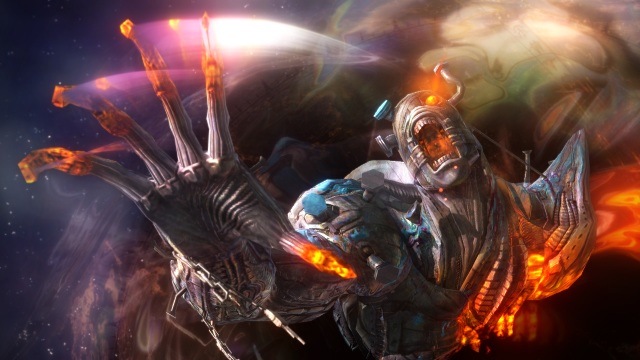
Also worth a mention are the idyllic beach colony of New Bodhum, the Blade-Runner influenced city of Academia and of course, the apocalyptic majesty of Valhalla. All are populated by the series’ trademark monsters, though if you’ve played the previous game, there are very few which will elicit surprise.
SOUND: While the graphics represent the maintenance of a consistently high standard, Final Fantasy XIII-2’s soundtrack is a diverse, inventive gem that’s easily one of the best of the series. A surprisingly large proportion of the tracks feature vocal performances, and though an otherworldly electronic thread remains throughout, the music runs the gamut from silky-voiced pop to haunting ambience to occasionally – brilliantly – full-on grinding metal.
Voice acting is fairly standard, and though you’d struggle to pick young Serah and Noel out of a vocal line-up of JRPG protagonists, their performances are heartfelt and emotive when necessary without ever descending into overwrought sickliness.
GAMEPLAY: Forget everything you remember about Final Fantasy XIII’s 20-hour tutorial, its restrictive levelling system and tedious, corridor-like level design. Final Fantasy XIII-2 gives you glorious, exhilarating freedom right from the very beginning. Everything, from which gates you choose to unlock, to how you decide to level your characters and who, or what, you have in your party is yours to decide. Fans unsettled by Final Fantasy XIII’s reluctance to allow the player any kind of independence will breathe a long-held sigh of relief upon being let loose in its successor’s world.
It’s hard to adequately express the importance of this without first reminding ourselves why the previous game’s design choices were so troubling. Without freedom of choice, a JRPG swiftly becomes an exercise in mindless grinding, accumulating XP just so it can be trickled into pre-determined pots with arbitrary labels. For all its merits, this was an adequate description of Final Fantasy XIII, a game which left even the most ardent fans afraid that it signalled the series’ descent into beautifully-rendered banality.
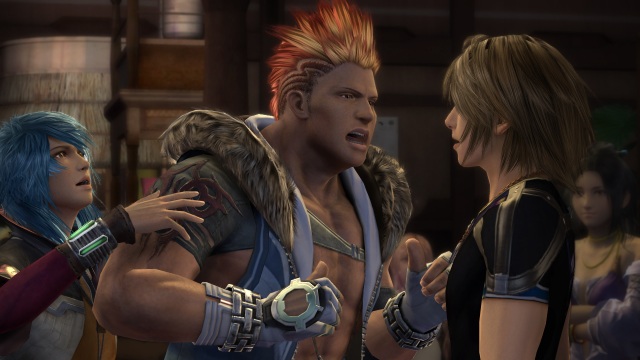
Final Fantasy XIII-2 should allay these fears. The battle system remains unchanged from the previous game, meaning that fights are still an exercise in timing and strategy rather than micromanagement. Characters can play one of six “roles” in battle at any given time, Commando (dealer of physical attacks), Ravager (dark mage), Synergist (caster of helpful status effects) Saboteur (caster of status ailments), Sentinel (damage-absorbing tank) and Medic (er, medic).
Since players control only one character at a time during a fight, the skill is in choosing which combination of roles (or “Paradigms”) to take to the field, as you only have the option to play with six combinations once a battle has begun. Serah and Noel can develop each of these roles independently, and though Serah’s better suited to magic and Noel to physical roles, there’s still plenty of scope for strategic levelling. Add to this the fact that there’s almost infinite scope for the third member of your party, and you’re looking at a thrillingly deep and flexible battle system.
Yes, this third member is a monster, obtained (if you’re lucky) by defeating them in battle. Almost every monster you encounter can be press-ganged into your service in this manner. Once won, monsters can all be levelled independently by spending “Monster Materials” on them. Dropped in battle, found in treasure chests or bought from mysterious bikini-clad time-travelling saleswoman Chocolina (possibly lost on her way to a Brazillian street carnival), each monster material increases a specific attribute of a monster, such as HP, stength or mana. Because monster “Crystariums”, the visual representation of their skills, attributes and abilities, are finite and materials hard to come by, choosing which to spend on which monster requires forethought and planning.
Monsters can also be “absorbed” by others, thus donating their passive abilites at the cost of their existence. Building a strong, effective monster is thus fairly costly, and since each monster can only perform one role in battle, you’ll want one of each to make sure you’re prepared for both regular battles and boss fights.
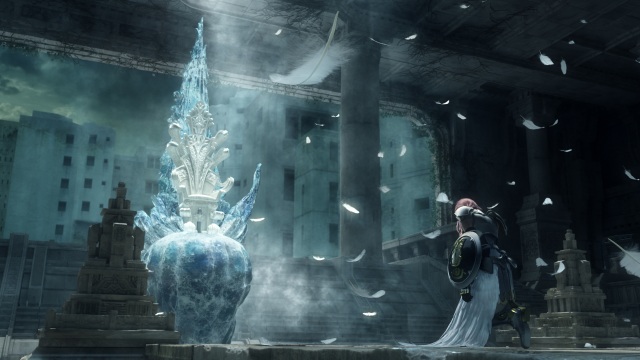
The aforementioned QTEs, sorry, “Cinematic Action” sequences, are not a dreadful blight on the gameplay, but neither are they a great asset. If you’re one of those people who still has to look at Xbox face buttons to check which is the green one (seven years and I still can’t remember), you might be happier with the PlayStation 3’s more distinctive symbols, since failing these tests can make battles significantly harder and, more importantly, see you miss out on some cool enemy death animations.
The non-fighting elements of gameplay are also varied. To open gates, you’ll need to earn “fragments”, crystalline artefacts that don’t belong in a given time or place. These are earned by completing puzzles, resolving paradoxes (read: boss fights), hurling a protesting Mog far across the map to get them for you (as fun as it sounds, especially when you miss and he bounces into oblivion) or undertaking fetch quests from NPCs who sit around picking their nose waiting for an adventurer to take on a dangerous and unpaid mission rather than go and get their lost comm device/fallen star/rare flower themselves. Very wise.
If there’s a criticism to be made of the gameplay, it’s that it can feel a little like an overdue apology for the problems of recent games, and for all its class, balance and flawless presentation, there’s nothing that will completely blow you away. Still, it’s hard to criticize Square Enix for erring on the side of caution when their recent well-meaning attempts at invention met with such a poor response.
LONGEVITY: This is Final Fantasy. If you’re not gleefully mopping up monsters for weeks after the 50-hour story has finished, you’re doing it wrong.
VERDICT: Although Final Fantasy XIII-2 occasionally feels like it’s methodically working its way down a checklist of features that were missing from the previous game, that’s hardly a bad thing when that game was missing so much. A floating casino so redolent of Final Fantasy VII’s Gold Saucer amusement park that it even has its own Chocobo races feels like a particularly uninspired attempt at fan-appeasement, but if this is a symptom of Square Enix paying close attention to the desires of a loyal fan base, it’s hard to complain.
An episodic storyline and a pair of likeable but familiar protagonists keep the game back from greatness, but there’s no getting around the fact that this is the game that fans have been waiting for. If you’ve kept the faith since the underrated Final Fantasy XII, then your patience is about to be rewarded. If you flung in the towel around the twentieth hour of Final Fantasy XIII’s tutorial, it is now safe to return. The big daddy of JRPGs is back, and though it may bear the scars of a troubled few years, it still knows how to captivate and exhilarate in a way none of its competitors can quite manage. Welcome back, old friend.






